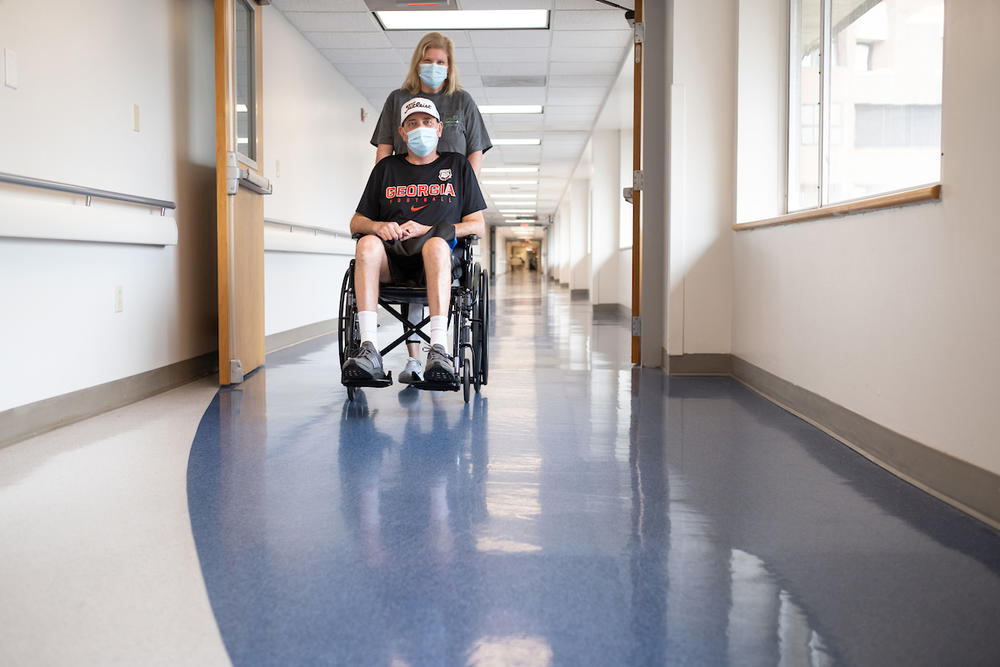
Caption
Mark Buchanan of Roopville, Georgia, is wheeled down a hallway by his wife, Melissa, at the University of Florida Health Shands Hospital in January. Buchanan required a double-lung transplant to save his life after contracting COVID-19.
Credit: Jesse S. Jones/University of Florida Health

